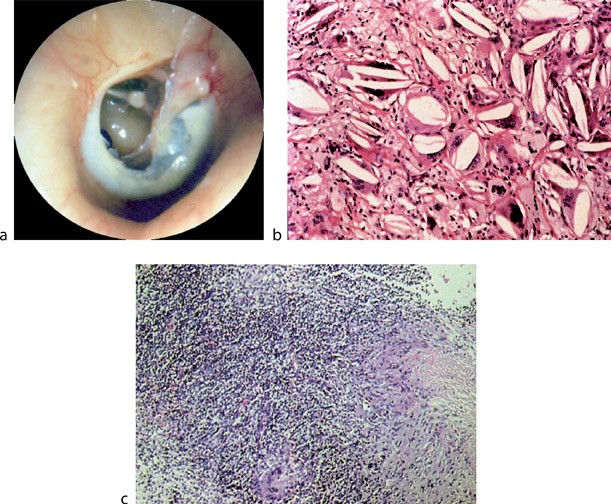Depending on the defect size more than one piece of cartilage may be used.
Ear attic defect.
Autologous incus is a reliable method to use with an intact stapes.
Probable large but dormant sac.
A cholesteatoma is an abnormal noncancerous skin growth that can develop in the middle section of your ear behind the eardrum.
35 mastoid cholesteatoma.
The attic is just above the eardrum.
The cavity of the middle ear is a narrow air filled space.
A defect by erosion is seen in the posterior superior aspect of the eardrum with accumulation of keratinous material.
A large attic defect is seen with accumulation of keratinous material.
These chambers are also referred to as the atrium and the attic respectively.
Wide transcanal atticotomy was performed and the bony defect was enlarged into the antrum and was packed and left open.
It may be a birth defect but it s most commonly caused by repeated.
A slight constriction divides it into an upper and a lower chamber the tympanum tympanic cavity proper below and the epitympanum above.
Residual attic and tympanic membrane defects were reconstructed with a composite tragal graft.
Bone defect of the attic wall eustachian tubal dysfunction and middle ear inflammation among others are proposed as factors that can cause the pocket.
Reconstructing the attic defect is usually done with tragal cartilage with perichondrium as an island graft type fashion.
Abstract recurrent cholesteatoma after closed techniques occurs in four patterns.
If untreated a cholesteatoma can eat into the three small bones located in the middle ear the malleus incus and stapes collectively called ossicles which can result in nerve deterioration deafness imbalance and vertigo.
The pars tensa is diffusely tympanosclerotic secondary to past middle ear disease.
The defect in the ear drum is seen and indicated with the black arrow.
No middle ear ossicles are observed.
Attic retraction pocket cholesteatoma case 1.
The area of the superior portion of the eardrum is retracted or sucked in trapping skin cells and debris and eating away at the hearing bones and ear canal bone.
This is a cholesteatoma that has formed.
Group 2 included 31 patients with extensive disease within the mastoid cavity proper.
1 through an attic defect 2 via erosions in the canal wall 3 as a pars tensa invagination and 4 as a.

